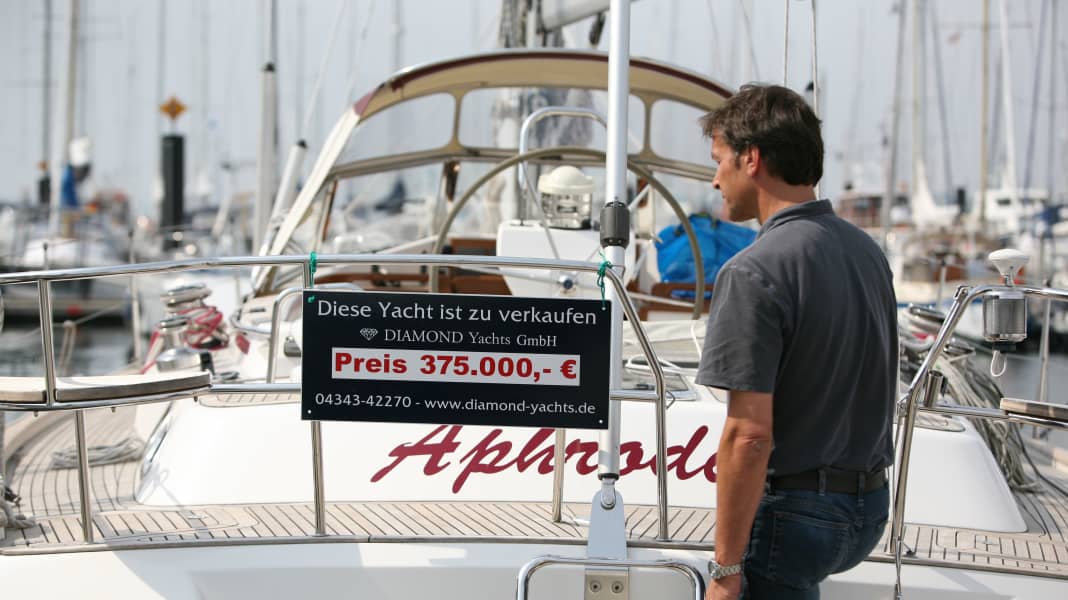
From now on, we will be addressing the most frequently asked questions - and misunderstandings - about yacht insurance. In the first instalment, with the help of Dirk Hilcken from the leading boat insurance broker Pantaenius yacht insurance the fundamental Sense and purpose of a liability and comprehensive policy for the ship.
Anyone wishing to take out such insurance is immediately faced with a second fundamental question: How much is my boat worth, how much should I insure it for? For a new boat, the answer is perhaps easy to determine, but for a second-hand yacht, good advice is expensive. Because how do you actually measure the Sum insured - solely on the purchase price, the condition, the age of the ship? And what is the so-called Fixed rateto which many insurance providers repeatedly refer?
Dirk Hilcken explains:
The two words - spoken in euros - can refer to the same number. But they do not have to. Simply explained: The sum insured is used to calculate the value of the ship and ultimately the insurance premium. Fixed rate, on the other hand, is insurance Latin for the amount that is paid out in the event of a total loss, provided no deductions are made for age. In other words, whenever the insurance value is defined in the conditions as the new value. Admittedly, insurance is not quite so self-explanatory.
The sum insured and the fixed valuation can correspond to the same value. But they do not have to
In principle, every insurance contract for boats or yachts specifies a sum insured, regardless of how the claim is settled. This is also quite logical, as the insurer must of course be given the most precise information possible about the extent of the risk that is covered in a specific case.
This sum insured can then be used to calculate a premium rate with the help of various factors such as the type of ship, size, type of use, cruising area or amount of the excess. What is included in the sum insured depends on the respective provider. The insurance conditions therefore include a section called "Insured property", for example. Better policies also cover equipment, trailers, accessories, storage trestles or dinghies within the hull. All of these items should therefore also be included in the sum insured.
How the sum insured is determined
If it is a new boat, determining the sum insured is usually relatively simple. Add the purchase price plus everything that has been invested to get the boat ready for the season - and you have the sum insured. As already described, depending on the insurance conditions, accessories, trailer etc. should of course not be forgotten.
More about boat insurance:
- Burglary, collision, accident: Checklist for the correct procedure
- What to do in the event of damage? Prevention, mitigation, settlement
- The right policy for everyone: 7 sailor types at a glance
- Attention, trap! How to read the small print
- Legal advice: The most important answers in the interview
- Contract types: What policies are available
For older boats, the question of the appropriate sum insured is sometimes a little more complex. We ourselves work with the rule of thumb that the sum insured should be selected in such a way that, in the event of a total loss, a similar boat in the same condition of care and equipment could be purchased for this amount. This applies regardless of how the insurance conditions define the settlement of total loss or partial loss.
However, especially if partial damage is settled according to the principle of new for old, the sum insured must usually have a certain minimum amount so that, for example, the mast breakage of an aging ten-metre sailing yacht does not immediately lead to a total economic loss. In this case, the insurer does not automatically pay less for the settlement of the partial loss because the yacht is slightly older or the sum insured is slightly lower than that of the neighbouring yacht, which has the same model of a slightly newer year of construction. A new mast of a certain size simply costs what it costs.
Why the definition of the fixed rate is important
Now that the sum insured has hopefully become a little clearer, we can turn our attention to the term fixed premium. This is a frequently used term, which unfortunately does not always have the same meaning for the customer, but more on that later. As described at the beginning, the fixed valuation in its original meaning is intended to explain that the amount of the sum insured is shown as a fixed insured value over the entire term of the contract. If there is a total loss, no deductions are made. No matter how long the boat has been insured.
The most obvious differentiation in this case is provided by boat policies in which the insured value is defined as the current value. Here, current value deductions are made in the event of a claim depending on the previous insurance period. The exact wording in such cases sometimes differs from provider to provider. However, it is common for fixed percentages to be deducted in the event of partial damage and deductions depending on the age and, above all, the condition of the boat in the event of a total loss. Fixed rate or current value therefore describe the principle according to which compensation is paid in the event of damage.
Understood everything? Insurance companies wouldn't live up to their reputation if there wasn't a little "but" waiting for us somewhere. Unfortunately, the fixed rate is not a protected term. As already indicated, this sometimes has unpleasant consequences for policyholders. In plain language: not every fixed rate is really fixed.
How the fixed rate is sometimes softened
Many providers who use the term in their advertising refer in their terms and conditions to section 76 of the German Insurance Contract Act, for example. This explains that significant deviations in the insured value from the actual value of an item lead to deductions. However, how and when such a deviation is significant and how the individual condition of the boat or the current boat market are taken into account remains unclear at first.
Other providers also soften their fixed rate after a fixed period of time and then rely on current value cover. Caution is therefore advisable in this case. Only a fixed price based on the new value and without corresponding notes is actually fixed.
The expert:

